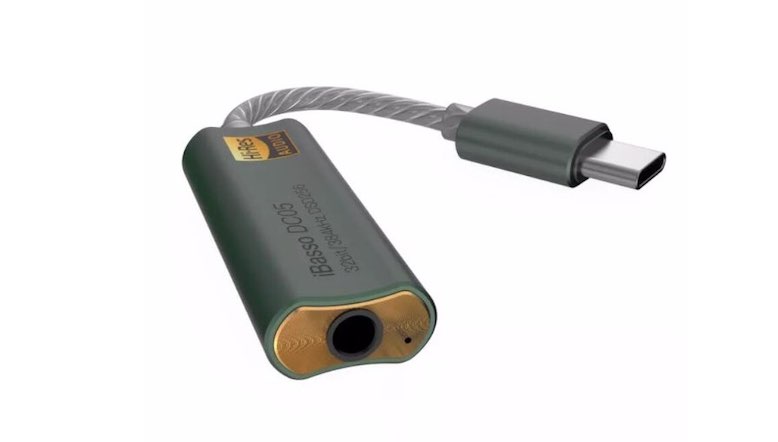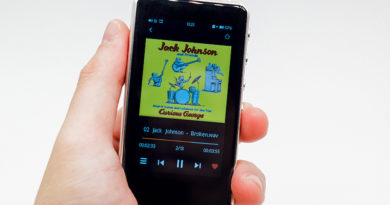iBasso DC-05 DAC/Amp Review – Something Wicked This Way Comes
These days you can find a perfectly serviceable dongle for <$15, which might reasonably inhibit you from spending exponentially more. The $59 iBasso DC-05 does, however, have certain distinguishing features. For one thing, it decodes MQA, which is typically the province of pricier DACs. For another, it has an accompanying app which ostensibly allows for 64-step internal volume control. (I found it tedious to use the app, but it will benefit very sensitive IEMs).
The DC-05 also claims “Time Domain Jitter Eliminator and HyperStream III Architecture” to reduce signal noise and distortion, and I did find it to be extremely quiet and hiss-free. Finally, and most critically, it has substantially above-average driving power and pairs much better with planars and lower-efficiency IEMs than its cheaper rivals. It does run warm, but doesn’t seem to be a battery hog.
Said driving power really defines the DC-05’s sonic character—it has a rich, slightly warm tone which deepens the low end and makes drums and percussion sound larger-than-life, all of which has the effect of enlivening poorer recordings and lower-quality files.
High end is a bit smoothed over and some high-level details are missing; on better recordings, the DC-05 can sound a bit blunt, albeit never shrill or peaky. The dirt-cheap Conexant CX31993 actually sounds more transparent and less colored than the DC-05, but significantly trails the DC-05’s dynamic slam and bass control.
Fairly compared to a price peer like the ($70) Hidisz S-3 (which on its own terms is quite energetic and bassy), the DC-05 sounds deeper, louder and fuller, while the more analog-sounding S-3 is truer-to-source and presents more high-end resolution. The S-3 also places more air between instruments. I preferred the brawnier DC-05 for rock and the more nuanced S-3 for jazz and acoustic fare.
Moving up the foodchain to the $110 Cozoy Takt-C gives you a more neutral presentation, with much less bass boost and more treble detail, although the DC-05 worked better and sounded less reserved and more impactful with less efficient (>150 Ohm) buds and cans.
Ultimately, I probably wouldn’t be content with the DC-05 as my only dongle, as less adrenalized pieces pair better with certain sources and genres. That said, it is a step up from entry-level and the point at which diminishing returns starts to kick in. Recommended.
Non-disclaimer: bought it myself
Specifications iBasso DC-05
| Chipset: Sabre ES9219C Impedance: 0.5 ohm Power: 2 VRMS (@300 ohm), 13 mW; 1.73 VRMS (@32 ohm), 93 mW, 1.5 VRMS (@16 ohm), 140 mW SNR: 121 dB THD+N: -105 dBA (@32 ohm) Frequency Range: 20 – 40 000Hz PCM: 32 bit/384 Hz DSD: native DSD64, DSD128, DSD256 MQA: 16X Socket: USB-C Tested at: $59 |








